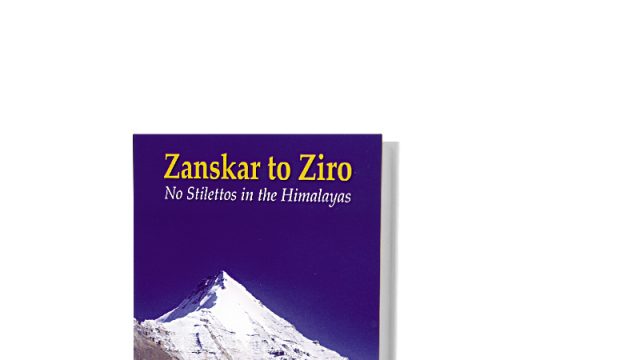Two women, ten years of discovering and exploring the Himalaya, and the love of adventure over a 10,000 km trail. This is the crux of travel writer and photographer Sohini Sen’s new book, Zanskar to Ziro: No Stilettos in the Himalayas. The book sees the author and her travel partner Sumita travel far and wide, from Jammu and Kashmir all the way to Arunachal Pradesh and even to neighbouring countries Nepal and Bhutan, in search of spectacular sunrises, local folklore, stunning Buddhist gompas and the monks who live there.
Travelogues on the Himalaya and personal experiences are found aplenty. However, what sets this particular book apart is the female narration—stories of how the author and her travel partner had to cope with being women on rugged terrain. They came across people who tried to take advantage, pushed the heaviest sofas against their hotel door at night, and always kept the tripod handy in case of intruders.
While Sen’s description of the Himalaya in Ladakh and Himachal Pradesh makes you want to pack your bags immediately, it also speaks soundly of the various dangers such as the reality of AMS (acute mountain sickness), mud slides, falling boulders and destruction. These events are entwined with beautiful discoveries of hidden gems. For instance, when they found themselves cut away from reality in picturesque Rakcham in Himachal Pradesh, and the time when they undertook a long journey to reach Langzain Spiti and came across a massive Buddha statue.
The book is divided into the various states or countries the two visited, and the places they went to or stayed at make up the chapters. There are eight main regions—Jammu and Kashmir, Himachal Pradesh, Uttarakhand, Nepal, Sikkim, Bengal, Bhutan and Arunachal Pradesh. Each destination is well described with its local history and places, and, of course, food—from eating half-cooked momos in Ladakh to watery dal in Tabo for having angered the caretaker’s wife. But tea is a running theme throughout.
As the reader goes over the 400-odd pages, there’s one bond that comes across—the love affair of the two women with the Himalaya. It’s best read with a mug of hot tea by one’s side.




